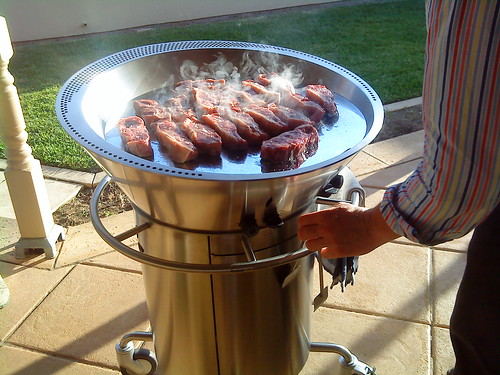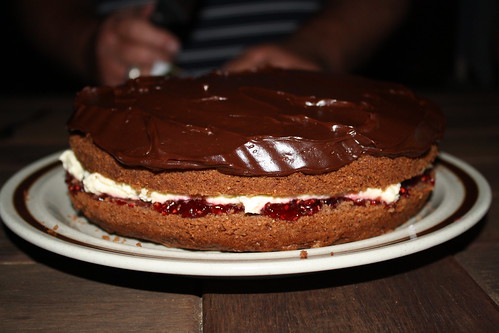
There are plenty of internet based wine ‘initiatives’ around this summer … I’ve already written about the Great South Australian Wine Adventure and, in addition to this, we have the Summer of Riesling and SC Pannell’s All for One, to encourage us to drink Australian wine between the start of the new year and Australia Day.
I guess it’s the warm weather that makes us thirsty …
To add to this, we also have the Rosé Revolution which is all about recognising that rosé can be a serious wine for serious wine lovers. All too often rosés are made to appeal to a market segment that doesn’t normally drink wine – and this can leave them a little too sweet and unbalanced for those of us more used to sipping wines like Sauvignon Blanc or Shiraz.
Last night, Wine Australia hosted the Adelaide Rosé Revolution Live Event at Homestyle Solutions and I was lucky enough to go along and mingle with Adelaide’s twitterati while tasting a variety of rosés, served in Reidel glasses no less, and enjoying some very tasty food provided by Feast! Fine Foods.
The rosés that were poured came from a mix of local and interstate wineries and many were tied in with those being tasted by the Qwoff Boys and their live twitter tasting from the Yarra Valley. The heavy social media element meant that a lot of time was spent with noses buried in phones (when not in the glasses!) but we all managed to fit in a lot of normal socialising along with the serious wine talk.
Of the wines tasted last night (I tasted about eight, but had a serious pen malfunction part way through the evening) there was a huge range of colour and degrees of dryness. There’s been some chat about whether or not winemakers should strive to make dry rosés pale and the sweeter styles darker/pinker in colour … personally, I think that’s a terrible idea. If you think about all the work that has been done to persuade people away from the “white wine with fish and white meat” style of thinking, such a simplistic aim has to be a bad thing, not to mention the constraints it puts on winemakers.* Everyone perceives sweetness slightly differently (and sometimes a wine can have so many fruit flavours it can seem sweet when it’s actually dry!) that the best way to navigate a new rosé is to try it. If you can’t do that – read the back label or have a chat to your wine merchant. A good wine store will have employees who can tell you this type of thing (or they’ll be honest if they don’t know!).
So … my personal highlights of last night were the (sparkling) De Bortoli Rococo Rosé – bone dry and an absolutely delicious wine to serve as an aperitif. The retail price looks to be around $22 which makes it good value for money too (often sparkling rosés are a little more expensive than their white counterparts).
In the still rosés my favourite was the Longview Boat Shed Nebbiolo Rosé. Although some punters may find it ever so slightly off dry that’s definitely balanced by some good acidity and it’s tasty to boot. Not only that, it comes from our own Adelaide Hills. It retails just under $20 and would pair well with food that has a bit of weight and even a bit of spice – think a meaty fish with a slightly spicy marinade that’s been grilled.

It was a great evening and really showcased the diversity that can be found in Australian rosés and certainly means that I for one will be giving rosé a little more consideration this summer.
If you’ve been involved in a Rosé Revolution event, or just have a favourite rosé the rest of us must know about, please do leave a comment!
* If you care … the colour in a rosé comes from the time the wine spends on the grape skins, but sweetness (or otherwise) comes from fermentation and how much sugar is fermented out of the wine. To try to connect two really unconnected things seems like a bad idea to me!
, Amazon US
and internationally through the Book Depository.
, Amazon US
and internationally through the Book Depository.




